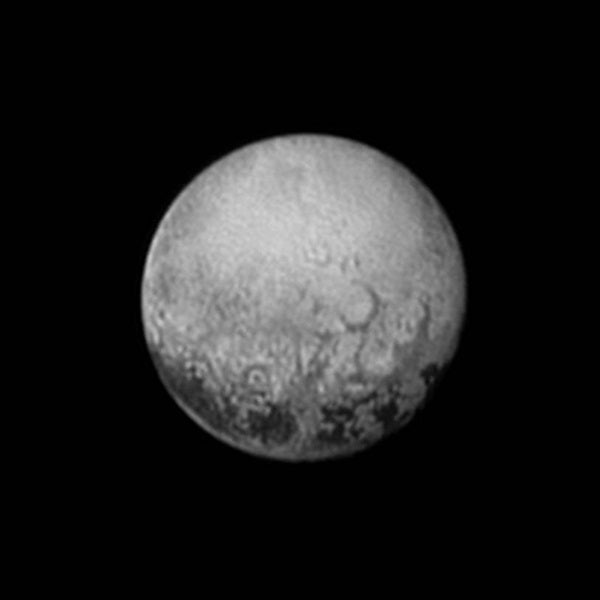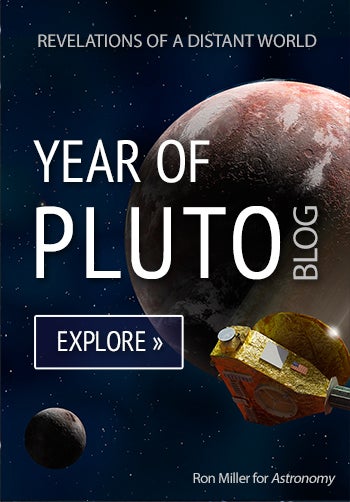New Horizons’ last look at Pluto’s Charon-facing hemisphere reveals intriguing geologic details that are of keen interest to mission scientists. This image, taken early the morning of July 11, 2015, shows newly resolved linear features above the equatorial region that intersect, suggestive of polygonal shapes. This image was captured when the spacecraft was 2.5 million miles (4 million kilometers) from Pluto.
Three billion miles (5 million kilometers) from Earth and just 2.5 million miles (4 million km) from Pluto, NASA’s New Horizons spacecraft has taken its best image of four dark spots that continue to captivate.
The spots appear on the side of Pluto that always faces its largest moon, Charon — the face that will be invisible to New Horizons when the spacecraft makes its close flyby the morning of July 14. New Horizons Principal Investigator Alan Stern of the Southwest Research Institute, Boulder, Colorado, describes this image as “the last, best look that anyone will have of Pluto’s far side for decades to come.”
The spots are connected to a dark belt that circles Pluto’s equatorial region. What continues to pique the interest of scientists is their similar size and even spacing. “It’s weird that they’re spaced so regularly,” says New Horizons program scientist Curt Niebur at NASA Headquarters in Washington, D.C. Jeff Moore of NASA’s Ames Research Center, Mountain View, California, is equally intrigued. “We can’t tell whether they’re plateaus or plains, or whether they’re brightness variations on a completely smooth surface.”
The large dark areas are now estimated to be 300 miles (480km) across, an area roughly the size of the state of Missouri. In comparison with earlier images, we now see that the dark areas are more complex than they initially appeared, while the boundaries between the dark and bright terrains are irregular and sharply defined.
In addition to solving the mystery of the spots, the New Horizons Geology, Geophysics and Imaging team is interested in identifying other surface features such as impact craters, formed when smaller objects struck the dwarf planet. Moore notes, “When we combine images like this of the far side with composition and color data the spacecraft has already acquired but not yet sent to Earth, we expect to be able to read the history of this face of Pluto.”
When New Horizons makes its closest approach to Pluto in just three days, it will focus on the opposing or “encounter hemisphere” of the dwarf planet. On the morning of July 14, New Horizons will pass about 7,800 miles (12,500km) from the face with a large heart-shaped feature that’s captured the imagination of people around the world.
Regularly uploaded raw, unprocessed 100-millisecond images of the Pluto system from New Horizons’ LOng Range Reconnaissance Imager (LORRI).











